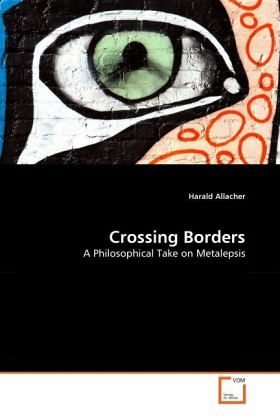
Crossing Borders
A Philosophical Take on Metalepsis
Versandkostenfrei!
Versandfertig in 6-10 Tagen
39,99 €
inkl. MwSt.

PAYBACK Punkte
20 °P sammeln!
Communication in a work of art is only perceived to be "typical" or "normal" when it follows a certain set of rules. Metalepsis defies not only those rules, but consequently also common sense: How can characters on stage address the audience? How can a novel's protagonst possibly hear the voice of a narrator, telling his or her life's story? How can the author of a novel enter his or her own work of fiction? While metalepsis is by no means an invention of the modern (or postmodern) age one may notice to encounter the phenomenon in increased and still increasing frequency, likely fueled by (in ...
Communication in a work of art is only perceived to be "typical" or "normal" when it follows a certain set of rules. Metalepsis defies not only those rules, but consequently also common sense: How can characters on stage address the audience? How can a novel's protagonst possibly hear the voice of a narrator, telling his or her life's story? How can the author of a novel enter his or her own work of fiction? While metalepsis is by no means an invention of the modern (or postmodern) age one may notice to encounter the phenomenon in increased and still increasing frequency, likely fueled by (in relative terms) new media, such as cinema, television or the graphic novel. All of those have their roots in traditional art forms, but do, in fact, more than merely imitate what has been done before. The present thesis certainly shows an interest in the historical development of the phenomenon in question. Its main point of interest, however, lies in the philosophical implications of what is characteristic of metalepsis: crossing the borders between fact and fiction.












